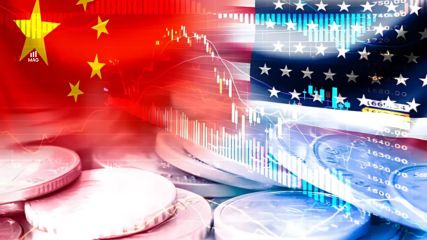
US China tariff reduction offers relief, but key restrictions and uncertainty remain.
For weeks, Amazon sellers have grappled with increasing costs and uncertainty stemming from high US tariffs on Chinese goods. These tariffs have squeezed profit margins and complicated sourcing strategies, creating a challenging environment for businesses relying on imports from China.
The constant fluctuation and high rates, at one point reaching a staggering 145% on some goods, forced many sellers to raise prices, absorb losses, or reconsider their product offerings altogether. The complexity of which tariffs applied to which goods, and the potential for further escalation, added another layer of anxiety for businesses trying to plan and forecast.
Even the “de minimis” rule changes added to the disruption, impacting low-value shipments. This ongoing trade dispute has cast a shadow over the stability of supply chains and the profitability of countless Amazon businesses.
Finally, there’s a sign of relief. Following recent talks in Geneva, the United States and China have agreed to a significant US China tariff reduction.
This move signals a potential cooling of the trade war and offers a chance for Amazon sellers to breathe easier and reassess their strategies in a hopefully more stable economic landscape.
Truce results to US China tariff reduction, but questions linger
Following tense negotiations in Geneva, the United States and China agreed on Monday to roll back the majority of their recent tariff increases by midweek. This agreement, featured on Reuters, will result in a significant rollback of tariffs and other retaliatory measures by Wednesday.
While this marks a significant de-escalation in trade tensions, core tariffs and long-standing restrictions remain untouched.
Key tariff reductions
The U.S. will reduce its additional tariffs on Chinese goods from 145% to 30%.
Washington will adjust or eliminate three executive orders that together imposed 115% in duties.
Temporarily reduced “Liberation Day” tariffs for 90 days with rates drop from 34% to 10%.
All tit-for-tat tariffs since April 2 will be removed by both sides
Tariff reductions bring relief, but disparities remain
The recent US and China trade truce includes significant tariff reductions, but the rollback is incomplete and applied unevenly across sectors. While both countries are scaling back duties imposed since April 2, earlier tariffs, many of which are substantial and remain in force.
US President Donald Trump"The best part of the deal" is that "China agreed to open itself up to American business"
Key adjustments by the United States
The U.S. will modify or remove three executive orders that together levied 115% in tariffs on Chinese imports. Washington is also cutting its “Liberation Day” tariffs from 34% to 10% for a 90-day period.
All tariffs from the tit-for-tat escalation post-April 2 will be eliminated.
China’s matching response
China has reduced its retaliatory tariffs to 10%, down from higher levels imposed during recent disputes. However, China continues to face a total effective U.S. tariff rate of 30% when earlier duties are included.
These include two rounds of fentanyl-related tariffs imposed earlier this year.
Lingering pressure on key sectors
Despite the rollback, Chinese exports of electric vehicles, steel, and aluminum remain subject to longstanding U.S. tariffs. These industry-specific measures highlight that while progress was made, major trade frictions persist.
China pauses select non-tariff retaliatory measures
China has agreed to suspend certain non-tariff countermeasures introduced against the United States since April 2. However, the scope and implementation details of these reversals to slash tariffs remain unclear, raising uncertainty for affected U.S. firms.
Retaliatory actions targeted for rollback.
China’s list of non-tariff measures included adding rare earths to its controlled export list.
Other actions included launching an anti-dumping probe into DuPont’s China operations and blacklisting various U.S. defense and tech companies.
Ambiguity over rare earths policy
China’s decision to tighten controls on rare earth exports applies to all countries, making it unclear whether it qualifies as a specific countermeasure against the United States. The original announcement from China’s Ministry of Commerce did not name the U.S., complicating interpretations under the new trade agreement.
Exporters of seven types of rare earths are now required to obtain licenses before shipping. China’s Ministry of Commerce has not issued a formal response to inquiries about how the rare earths measures fit into the current agreement. Officials from the Ministry of Foreign Affairs have directed questions back to the wording of the deal itself.
South China Morning Post"The rare earth elements now subject to the trade restrictions will require special export licences to be shipped out of China, allowing Beijing to throttle shipments by restricting the number of export licences it issues."
US importers rush to beat tariff clock amid 90-day window
US businesses are accelerating imports from China to capitalize on a 90-day window of reduced tariffs before rates may rise again. The sudden increase in demand follows a months-long slowdown in trade between the two countries.
Pressure mounts on global logistics. Importers may benefit from the temporary tariff relief. However, increased shipping volume risks driving up freight costs and congesting major ports.
Markets respond to supply chain momentum
Shares in global shipping firms such as Maersk and Hapag-Lloyd rose on investor optimism tied to the trade surge. Analysts note that the short-term rush could strain supply chains already navigating volatile conditions.
This development was featured on BBC, where Peter Sand of Xeneta discussed the challenges and opportunities facing U.S. importers during this critical trade window.
Tech sector caught in the crossfire
Electronics manufacturers are cautiously optimistic following the U.S.-China tariff adjustment, which offered some breathing room. Smartphone and laptop makers benefited from earlier exemptions, but gaming consoles and related devices were notably left out.
Companies react with global price adjustments
Sony, Microsoft, and Nintendo raised prices in select markets, citing external cost pressures. Apple is reportedly evaluating price hikes for upcoming iPhone models to offset tariff-related expenses.
Supply chain diversification accelerates
Apple, which manufactures about 80% of its U.S.-bound iPhones in China, is stepping up its efforts to shift production elsewhere. With 20% of iPhones now made in India, that share is expected to grow as the firm looks to reduce exposure to Chinese tariffs.
US investment may soften blow
Despite the turbulence, Apple has pledged $500 billion in U.S. investment, aligning with comments from President Trump regarding domestic expansion. The broader tech industry, however, remains exposed to ongoing trade policy shifts and manufacturing challenges.
Markets rally as tariff deal sparks investor confidence
US stock markets opened with strong gains following the morning announcement of a tariff agreement between Washington and Beijing. The Dow Jones and S&P 500 both jumped over 2.5%, while the Nasdaq soared more than 3.5%.
Tech giants lead the charge
Apple, Amazon, and Nvidia were among the biggest early movers. The rally signals investor optimism around reduced uncertainty in global supply chains.
Dollar strengthens, gold retreats
The US dollar rose against key global currencies including the yen, euro, and pound sterling. Meanwhile, gold prices fell to $3,215 (£2,436) before stabilizing, reversing some of the gains seen in April during policy volatility.
Gold, often a go-to for risk-averse investors, had hit a record high of $3,500 (£2,652) last month. The latest tariff developments have reduced near-term anxiety, at least temporarily shifting sentiment back toward equities.
Companies react with global price adjustments
Sony, Microsoft, and Nintendo raised prices in select markets, citing external cost pressures. Apple is reportedly evaluating price hikes for upcoming iPhone models to offset tariff-related expenses.
What this means for Amazon sellers
Act fast on tariff telief
Sellers should quickly move to import inventory, especially goods already in transit or storage, to capitalize on the temporary US China tariff reduction. With a large portion of Amazon products sourced from China, this offers significant cost savings.
Given the 90-day window, proactive Q4 inventory planning is also wise. Sellers with diversified manufacturing in China and other countries now have a strategic advantage.
Want to know exactly how to take advantage of this temporary tariff relief? Watch our video now for our Amazon agency‘s expert recommendations!






